 the Travel Enthusiast
the Travel Enthusiast
- 17 Aug
Edina in Fun and Travel | 1 COMMENTWeirdest fruits you might (not) want to taste
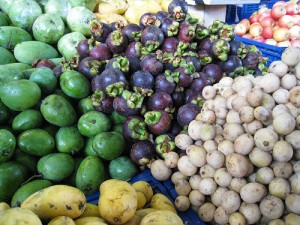 When visiting a new and exotic place, one usually tried to sample the local produce. So called exotic fruits and vegetables are available in mainstream supermarkets, far away from their place of origin, but eating a fruit that has been picked only a few hours before is a lot more satisfying than the exported, plastic foil-wrapped fare you can get in your local store.
When visiting a new and exotic place, one usually tried to sample the local produce. So called exotic fruits and vegetables are available in mainstream supermarkets, far away from their place of origin, but eating a fruit that has been picked only a few hours before is a lot more satisfying than the exported, plastic foil-wrapped fare you can get in your local store.Exotic fruit seem strange to us, even if in their homeland there is absolutely nothing unusual about them, and it might take a while until you scrounge up the courage to bite into a curiously shaped fruit that you’re not even sure i it’s edible. But remember: since the locals eat it, then you can eat it too. Here are the most unusual looking fruits which you should try.
Ugli – Jamaica
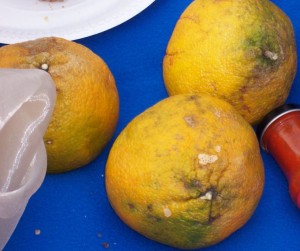 If you’re strolling through a Jamaican market and you spot a these wrinkled, rather spoiled-looking citrus fruits, you might think that the name is a joke. And so it is, because these fruits get their name from their unappealing exterior – to put it simply, they’re ugly. But they are also delicious, blending the sweetness of the tangerine and the aroma of the grapefruit.
If you’re strolling through a Jamaican market and you spot a these wrinkled, rather spoiled-looking citrus fruits, you might think that the name is a joke. And so it is, because these fruits get their name from their unappealing exterior – to put it simply, they’re ugly. But they are also delicious, blending the sweetness of the tangerine and the aroma of the grapefruit.Cherimoya – South America
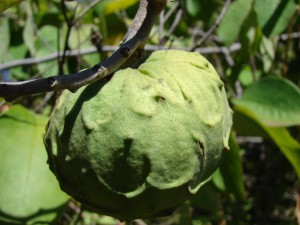 Cherimoya is a green, apple-sized, scaly fruit which looks more like a cactus without the spines, which grows in the Andean valleys of Bolivia, Chile, Colombia, Ecuador and Peru. The pulp of the fruit is white with lots of seeds, and according to Mark Twain, it is the “the most delicious fruit known to men”.
Cherimoya is a green, apple-sized, scaly fruit which looks more like a cactus without the spines, which grows in the Andean valleys of Bolivia, Chile, Colombia, Ecuador and Peru. The pulp of the fruit is white with lots of seeds, and according to Mark Twain, it is the “the most delicious fruit known to men”.The fruit is highly prized by the Moche of Peru, who repeatedly depicted the cherimoya on their earthware. The taste of the cherimoya is said to be a mix between banana, pineapple and papaya.
Rambutan – Southeast Asia
 Rambutan doesn’t look so much like a type a fruit than some strange, colourful dry land sea cucumber, or maybe a very small reddish hedgehog. This fruit is native to Southeast Asia, Malaysia, Indonesia, the Philippines and Sri Lanka, and it is related to the less dangerous looking lychee.
Rambutan doesn’t look so much like a type a fruit than some strange, colourful dry land sea cucumber, or maybe a very small reddish hedgehog. This fruit is native to Southeast Asia, Malaysia, Indonesia, the Philippines and Sri Lanka, and it is related to the less dangerous looking lychee.The rambutan is widely cultivated in Asia, and even in Africa and Central America nowadays. The fruit is sweet and juicy, and used to prepare some excellent jams and fruit preserves.
Durian – Indonesia
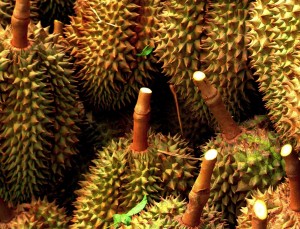 In Southeast Asia the durian is revered as the king of fruits, but while some people think that the fruit smells heavenly, others swear that its aroma is overpowering and even disgusting. The durian grows to an impressive 30 cm and is covered in a hard, spiny husk.
In Southeast Asia the durian is revered as the king of fruits, but while some people think that the fruit smells heavenly, others swear that its aroma is overpowering and even disgusting. The durian grows to an impressive 30 cm and is covered in a hard, spiny husk.The smell of the durian has been described as resembling almonds, rotten onions, turpentine and gym socks, and some hotels have even banned it. It can be eaten in several stages of ripeness, and it is also used to prepare certain savoury dishes. Look for durians in markets in Malaysia, Brunei and Indonesia, and find out if you love it or hate it.
- Flights
- Hotels
- Packages
- Cars
- Cruises
travel search by Travelgrove (get this widget)Soursop – Central America
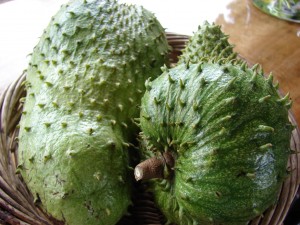 Here’s another fruit which doesn’t look particularly appealing, but completely prove that what’s inside counts more than the outside. This spiny green fruit is native to Central America and the Caribbeans, but it has spread to Southeast Asia as well. The green husk hides a creamy pulp which tastes like strawberries, pineapple, citrus, coconut and banana at the same time.
Here’s another fruit which doesn’t look particularly appealing, but completely prove that what’s inside counts more than the outside. This spiny green fruit is native to Central America and the Caribbeans, but it has spread to Southeast Asia as well. The green husk hides a creamy pulp which tastes like strawberries, pineapple, citrus, coconut and banana at the same time.You might also like
- 10000

Excellent post – Durian is my absolute favorite fruit. It’s the tastiest fruit on the planet and called “the king of fruits” for a good reason. Yes, you have to get used to the smell and also the extreme taste, but once you open your sense, you’ll love it.
Asians say that you should not eat this when drinking alcohol. I can’t confirm that it’s dangerous since I have done this quite a few times and never had issues.
There are two interesting thing:
– You can’t take the fruite into a hotel or an airport, apparently they can cause the fire alarms to go on.
– This is a strong aphrodisiac for men